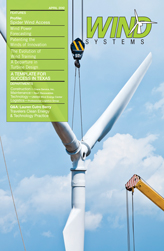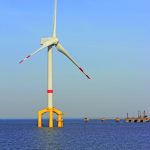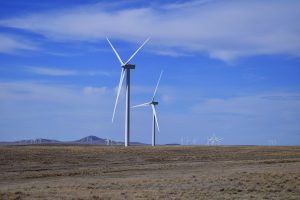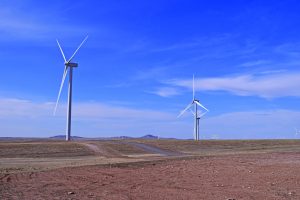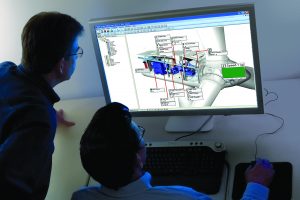Over the last two months we have looked at the capabilities of cranes in maintenance and construction applications. This month we are going to discuss the wind in relation to the cranes themselves. There is a certain paradox in the fact that capturing the wind is the whole purpose of erecting a wind tower and turbine, even as powerful winds can actually be a hindrance to those of us in the hoisting industry.
Friend or Foe?
Working in the wind industry is a double-edged sword. Wind farm sites are selected precisely for the fact of having a consistent presence of wind in order to turn the turbines—that only makes sense. At the same time, it is very difficult for those of us in the hoisting and rigging industry to do our work in high winds. To begin with, most if not all cranes are rated to work below or up to a set wind speed. This can vary from manufacturer to manufacturer, and of course depending on the type of crane being used. Some wind work can be accomplished with hydraulic cranes, but they aren’t preferred within the industry.
Hydraulic cranes have a solid boom and can be extended upwards of 200 feet in terms of its length. This is perfect for some situations, but in the wind industry it can mean that a lift requires a very large hydraulic crane. Think of it: As you send out more boom, the ability to work in the wind decreases faster in a hydraulic crane because of the length and weight of the the boom. Our 550-ton hydraulic crane has frequented wind parks and accomplished maintenance jobs with ease. But as you bring the wind component back into the equation you can find yourself waiting for the wind to die down. Hydraulic cranes are not preferred in windy situations. The average maximum wind speed for a hydraulic crane is around 16 mph, and anything beyond that can get you in trouble. In some situations this can decrease down to 10 mph for a hydraulic crane. Typically, on a mesa you can see steady wind speeds above and beyond our 16 mph limit. If we change the style of boom to lattice material, however, we can improve our chances of working in the wind.
Decreased Resistance
Lattice truck cranes and lattice crawler cranes are your “go to” crane in wind parks. As you pass a wind park on the freeway, it isn’t uncommon to see a lattice boom crawler crane or truck crane working onsite. This is because the lattice material is more “wind friendly,” presenting less resistance to that powerful force. Our lattice boom cranes can handle significantly more wind than our hydraulic boom cranes can. Air—and subsequently, wind—is considered to act like a fluid. This means that the less we have obstructing the boom, the less side loading occurs.
The lattice boom is very porous and open, and it can allow the wind to travel around the lattice beams and decrease the surface area the wind comes in contact with. With all that in mind, lattice boom cranes can handle higher wind speeds; around 20-25 mph. The manufacturer will usually have wind-specific attachments for the lattice boom cranes, so we can be more effective in the wind parks. Even with the ability to work in 20-25 mph winds, we can still have days where we simply can’t work.
Experience Matters
Working at a wind park is tricky. As I’ve stated in the previous installments of this column, we don’t have a crystal ball to peer into to see how the wind will behave that day. Wind gusts can arise and force us to shut our cranes down at any moment. Weather can change in what seems to be a heartbeat at a wind park, which can result in our crew not being able to work. Thankfully, we have years of experience in the wind industry, all the way from our amazing assembly directors to our crews in the field working the site. Dealing successfully with the forces you’ll confront at a wind farm is not something we can teach overnight. Our crews are very skilled and talented, and they have spent thousands of hours perfecting their trade to a level that allows us to be safe while we are working in high winds. But the fact remains that the very thing that makes a wind park viable and attractive can make it especially challenging for those of us responsible for erecting and maintaining these towering turbines.
















